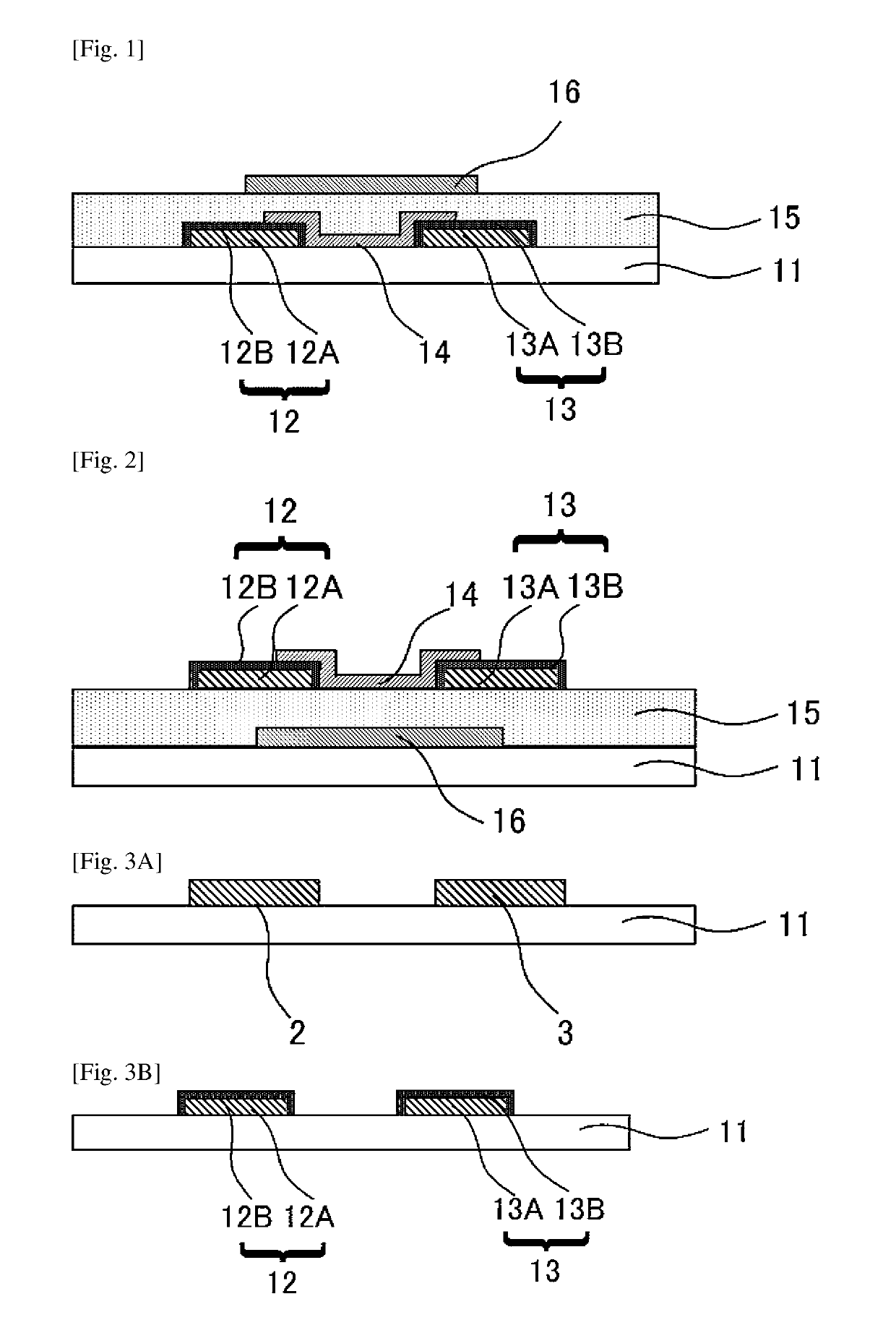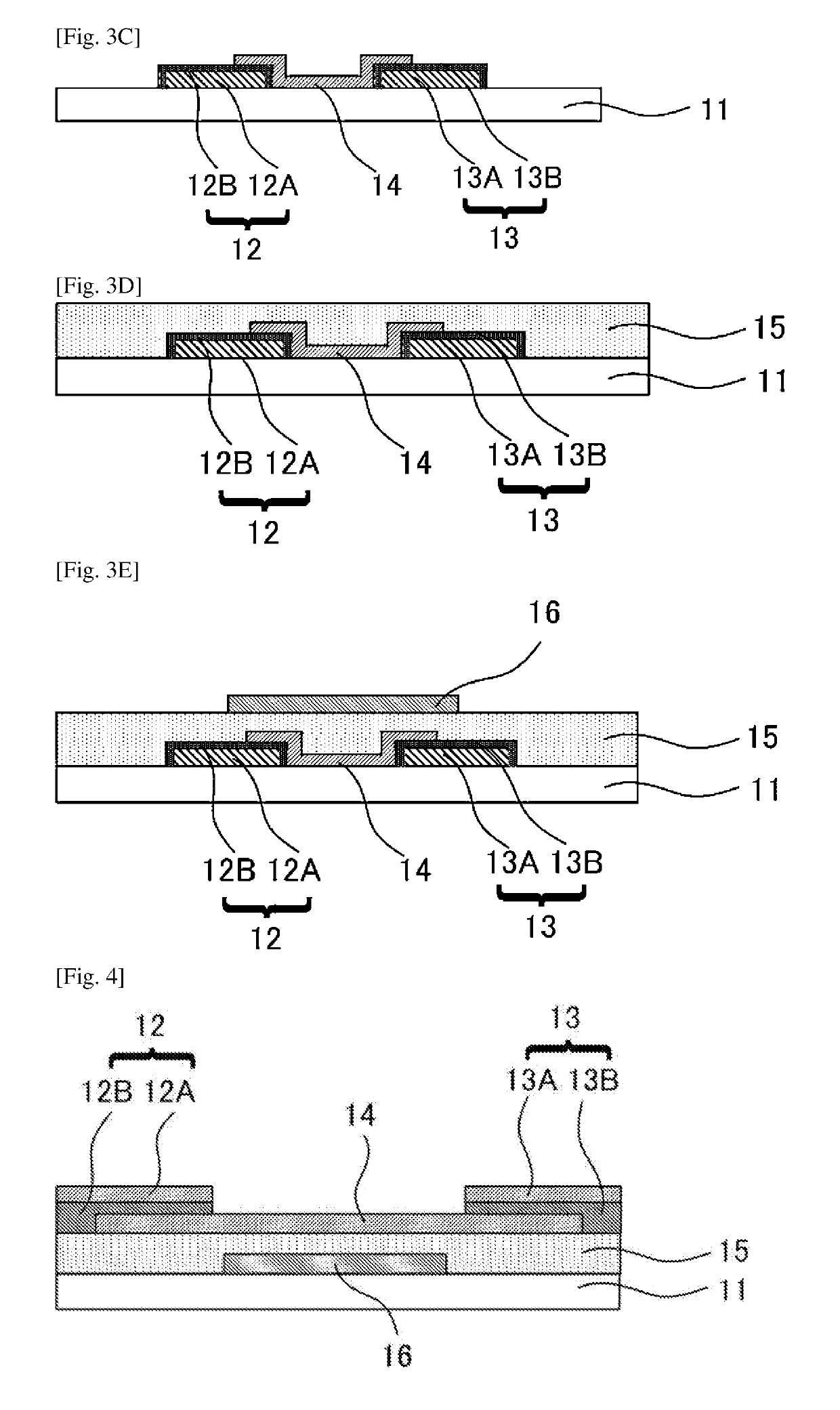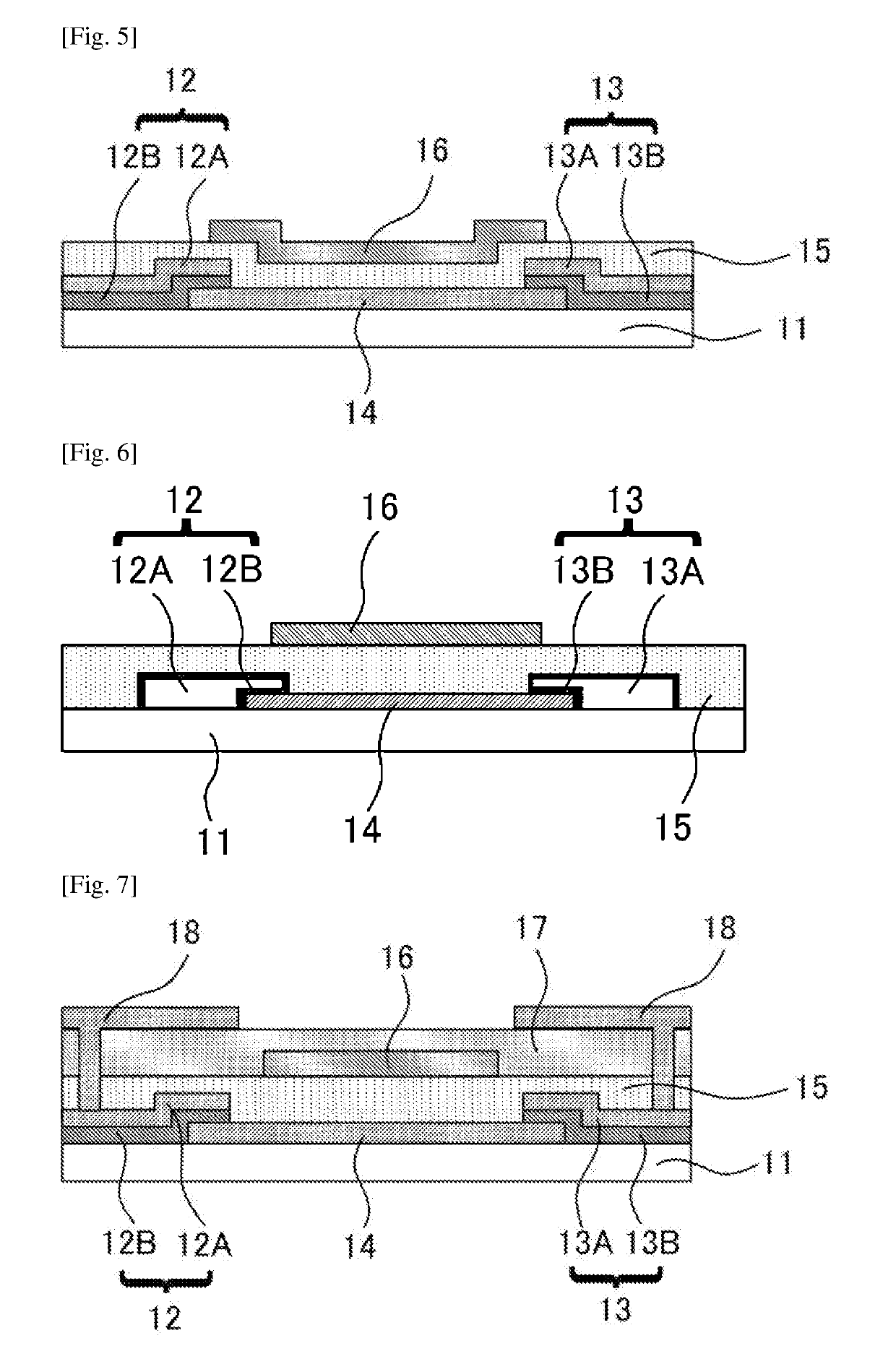Field-effect transistor, method for producing the same, display element, image display device, and system
a field-effect transistor and display element technology, applied in the field of field-effect transistors, to achieve the effect of favorable transistor characteristics and simple configuration
- Summary
- Abstract
- Description
- Claims
- Application Information
AI Technical Summary
Benefits of technology
Problems solved by technology
Method used
Image
Examples
example 1
[0287]
[0288]In Example 1, a top gate / bottom contact field-effect transistor as presented in FIG. 1 was produced. Here, numerical references presented in the following Examples correspond to the numerical references in FIG. 1 and FIGS. 3A to 3E.
[0289]>
[0290]Formation of Source Electrode Precursor and Drain Electrode Precursor
[0291]An Al film to be the second layer was formed on a substrate 11 through a sputtering method so as to have a thickness of 100 nm. Then, a Mo film to be the first layer was formed on the Al film so as to have a thickness of 30 nm.
[0292]Next, resist patterns were formed through photolithography on the formed Al / Mo film and the resultant was subjected to etching to form, on the substrate 11, a metal layer 2 and a metal layer 3 each of which has a predetermined shape.
[0293]—Oxidation Treatment—
[0294]The formed metal layer 2 and the formed metal layer 3 were subjected to heat treatment at 200 degrees Celsius with an oven under the atmosphere to form oxide regions ...
example 2
[0309]
[0310]In Example 2, a top gate / bottom contact field-effect transistor was produced in the same manner as in Example 1 except that the —Formation of source electrode precursor and drain electrode precursor—, the oxidation treatment in the “formation of source electrode and drain electrode”, and the > were changed to the below-described methods.
[0311]The same evaluations as described in Example 1 were performed. Results are presented in Table 1.
[0312]>
[0313]—Formation of Source Electrode Precursor and Drain Electrode Precursor—
[0314]A metal layer 2 and a metal layer 3 were formed in the same manner as in the production steps of the field-effect transistor in Example 1 except that the target used for forming the first layer was changed to each target presented in Table 1.
[0315]—Oxidation Treatment—
[0316]The formed metal layer 2 and metal layer 3 were subjected to plasma treatment in an oxidizing atmosphere under the following conditions to form oxide regions 12B and 13B.
[0317]The...
example 3
[0320]
[0321]In Example 3, a top gate / bottom contact field-effect transistor was produced in the same manner as in Example 1 except that the —Formation of source electrode precursor and drain electrode precursor— and the “formation of active layer” in Example 1 were changed.
[0322]The same evaluations as described in Example 1 were performed. Results are presented in Table 1.
[0323]—Formation of Source Electrode Precursor and Drain Electrode Precursor—
[0324]A metal layer 2 and a metal layer 3 were formed in the same manner as in the production steps of the field-effect transistor in Example 1 except that the target used for forming the first layer was changed to each target presented in Table 1.
[0325]>
[0326]Next, on a region disposed across the source electrode and the drain electrode on the substrate, a film of W-doped MgIn2O4 was formed through a RF magnetron sputtering method so as to have a film thickness of 50 nm. As described above, the surfaces of the source electrode and the dr...
PUM
 Login to View More
Login to View More Abstract
Description
Claims
Application Information
 Login to View More
Login to View More - R&D
- Intellectual Property
- Life Sciences
- Materials
- Tech Scout
- Unparalleled Data Quality
- Higher Quality Content
- 60% Fewer Hallucinations
Browse by: Latest US Patents, China's latest patents, Technical Efficacy Thesaurus, Application Domain, Technology Topic, Popular Technical Reports.
© 2025 PatSnap. All rights reserved.Legal|Privacy policy|Modern Slavery Act Transparency Statement|Sitemap|About US| Contact US: help@patsnap.com



